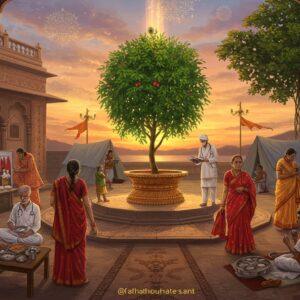
The Ayodhya Verdict stands as a pivotal judgment in India’s legal history. Delivered by the Supreme Court on November 9, 2019, this decision resolved a protracted dispute concerning the land in Ayodhya, Uttar Pradesh, a site revered by both Hindus and Muslims. This article delves into the historical context, legal proceedings, and cultural impact of this landmark ruling.
Historical Background of the Ayodhya Dispute
The Ayodhya dispute’s origins span centuries. Hindus believe the site marks the birthplace of Lord Ram, an incarnation of Lord Vishnu. In 1528, the Babri Masjid was constructed at this location by the Mughal general Mir Baqi. This mosque remained for over four centuries until its demolition in 1992 by Hindu activists, an event that triggered widespread unrest. Comprehending this historical backdrop is crucial to understanding the intricacies of the Ayodhya dispute.
The Legal Battle
The Ayodhya case represents one of the most prolonged legal battles in India’s history. The earliest documented lawsuit dates back to 1885, filed by Mahant Raghubar Das seeking permission to erect a temple on the disputed land. Numerous subsequent lawsuits from both Hindu and Muslim parties created a complex legal landscape. The Allahabad High Court’s 2010 verdict, which proposed dividing the land among the three primary claimants, was subsequently challenged in the Supreme Court. Finally, in 2019, the Supreme Court awarded the land to Hindu parties for the construction of a Ram temple, while also allocating an alternative plot for a mosque.
The Supreme Court Verdict
The Supreme Court’s momentous decision on November 9, 2019, drew upon archaeological findings, historical records, and religious texts. The court acknowledged the Hindu belief regarding Lord Ram’s birthplace and the existence of a pre-existing structure before the mosque. Simultaneously, it recognized the mosque’s historical significance and the imperative of communal harmony. The verdict aimed to resolve the conflict respectfully by allotting the disputed land for a Ram temple and providing an alternative site for a mosque construction.
Impact on Indian Society
The Ayodhya Verdict has profoundly impacted Indian society. While many perceive it as a stride towards reconciliation and communal harmony, others view it differently. The verdict has shaped political discourse, influencing various parties’ strategies to consolidate their support base. Furthermore, it has spurred interfaith dialogues and initiatives emphasizing peaceful coexistence.
The Significance of the Ram Mandir
The construction of the Ram Mandir carries immense cultural and religious weight for Hindus, fulfilling a long-held aspiration to honor Lord Ram at his revered birthplace. The temple is poised to become a major pilgrimage destination, drawing devotees globally. The black idol of Lord Ram, integral to the temple, holds its own historical and spiritual significance. Its black hue symbolizes the deity’s divine and eternal nature, enhancing the temple’s sacred aura. Learn more about the Ramayana’s influence on Hindu spirituality.
Challenges and Future Prospects
Despite the verdict’s legal closure, challenges persist. Maintaining peaceful coexistence among communities and preventing any resurgence of conflict remain crucial. Political and religious leaders play a vital role in fostering unity and promoting inclusivity. The construction of both the Ram temple and the mosque should symbolize India’s rich pluralistic heritage. Looking ahead, nurturing a society that respects and values diverse cultural and religious identities is paramount. Explore the geography of the Ramayana, including Ayodhya.
FAQs on Ayodhya Verdict and its Aftermath
What led to the Ayodhya dispute? The Ayodhya dispute stemmed from conflicting claims over the land where the Babri Masjid stood, with Hindus believing it to be Lord Ram’s birthplace and Muslims asserting their right to the mosque.
What was the Supreme Court’s decision? On November 9, 2019, the Supreme Court awarded the disputed land for the construction of a Ram temple and allocated an alternative plot for a mosque.
What is the significance of the Ram Mandir? The Ram Mandir holds deep cultural and religious meaning for Hindus, symbolizing the fulfillment of a long-cherished dream to honor Lord Ram at his birthplace.
Poojn.in: Your Partner in Ram Mandir Pujas
Poojn.in, India’s leading provider of spiritual and puja supplies, offers a wide selection of products to support your devotional needs. We provide everything you need, from Ram Darbar idols and puja thalis to incense sticks and ghee. Explore our collection today and experience the convenience of online shopping for all your puja essentials. Browse our selection of Lord Shiva murtis. Shop for Mangalam Camphor for your puja needs.
Conclusion
The Ayodhya Verdict represents a watershed moment in India’s history, striving to resolve a centuries-old conflict with sensitivity and respect. It underscores the vital need for understanding our shared heritage and promoting unity and harmony. As we progress, embracing this verdict as a catalyst for peace and reconciliation is paramount. By honoring our traditions and valuing our diverse cultural and religious identities, we can collectively build a stronger, more inclusive India.


